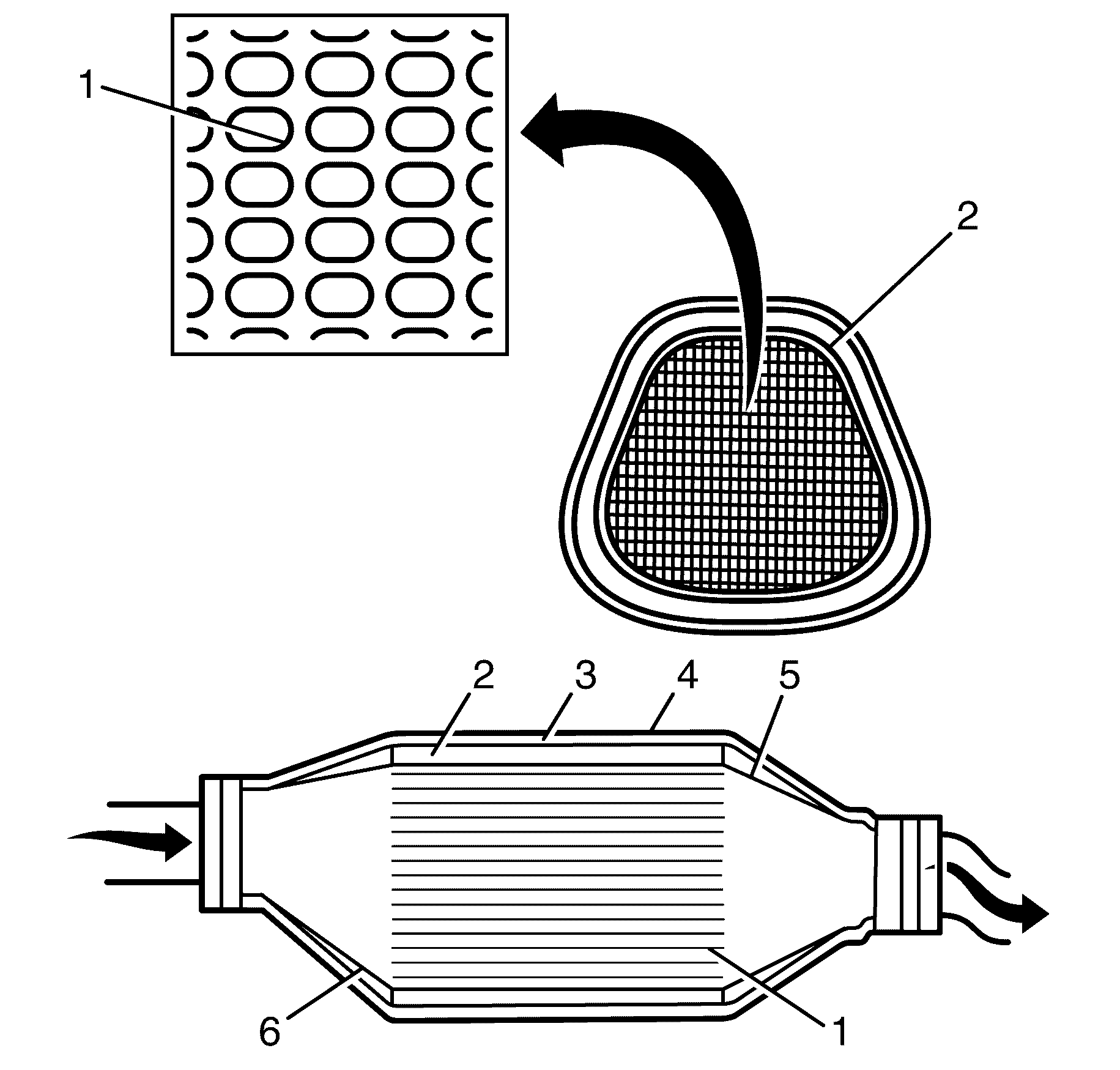Important: Use of non-OEM parts may cause driveability concerns.
Information contained within this section describes the general exhaust system.
Through developments in various emissions reduction system, significant reductions in emissions have been achieved. The developments have been primarily concerned with refinements in engine calibration and the optimization of exhaust system catalytic converter configurations.
The catalytic converter is similar to a muffler in appearance however, within the outer stainless steel shell (4), there is a ceramic monolith (1) which is honeycombed in the direction of the exhaust, as shown. The ceramic monolith is surrounded by a mat (2), which has the primary function of holding the monolith firmly in place to prevent any contact with the inner shell (3). A mesh (5 and 6) at each end of the converter prevents exhaust gases from fouling and eroding the mat.
Surfaces of the ceramic monolith that are exposed to exhaust gases are coated with a catalytic material. This material contains rhodium and platinum, which act to facilitate the chemical reactions necessary to oxidize carbon monoxide and hydrocarbons into harmless carbon dioxide.

The catalytic converter is a substance that accelerates a chemical reaction without itself being changed. Engine exhaust gases contain carbon monoxide (CO), hydrocarbons (HC) and oxides of nitrogen (NOx). When the exhaust gases flow through the monolith, reactions with the catalytic converter occur. CO and HC are converted by oxidation with oxygen (O2) in the exhaust gases to produce carbon dioxide (CO2) and water vapour (H2O). NOx is converted by reduction with CO to produce nitrogen (N2). The catalytic converter is called a three-way type because it simultaneously converts three components of exhaust gas (CO, HC and NOx) to harmless natural gases.
Service Notes
| • | Vehicles fitted with a catalytic converter should not be operated with leaded petrol. Lead will contaminate the catalytic converter. |
| • | Do not drop the catalytic converter as it will damage the ceramic monolith. |
| • | Do not allow water, oil or fuel to enter the converter as the ceramic monolith will be contaminated. |
| • | Do not drive the vehicle with the engine misfiring or with any of the spark plug leads disconnected. |
Important: Catalytic converter can be damaged or rendered
infective, if:
• Operated outside the limits of the closed loop mixture control system. • The engine burns excessive amount of oil. • The exhaust temperature at the converter is too high (exceeds 840°C).
